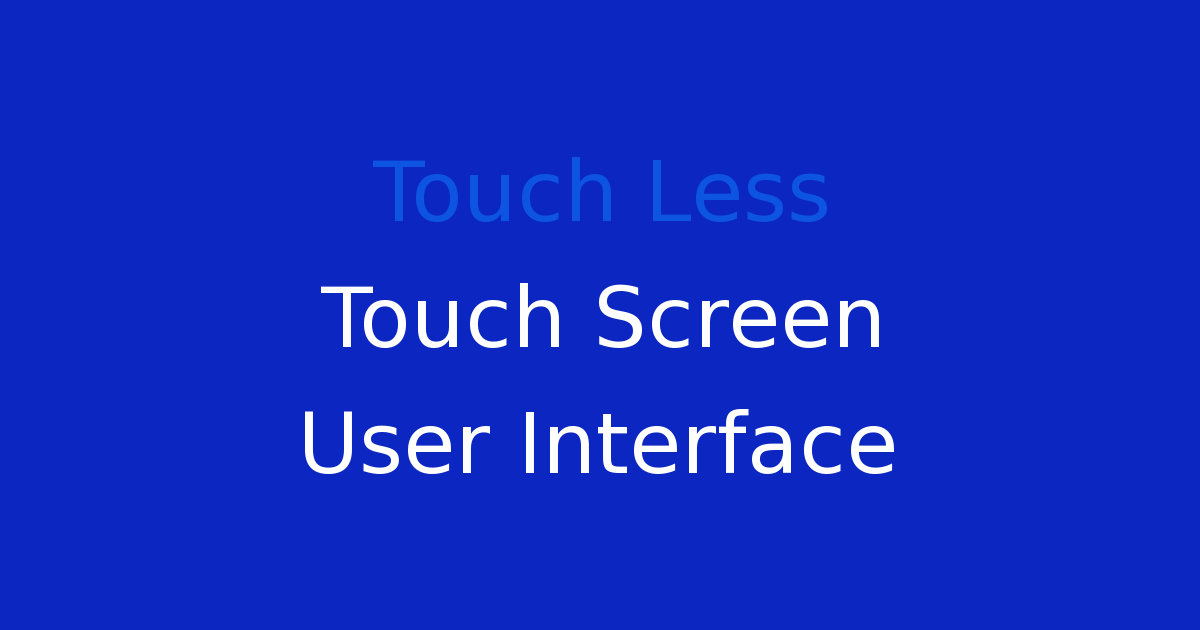Touch-free touchscreen interface.
Touchless Touch Screen User Interface
Introduction
In today’s fast-paced technological world, touch screen user interfaces have become a common sight in devices such as smartphones, tablets, and ATMs. However, the current touch screen technology requires physical contact with the screen, which can be unhygienic and difficult to operate in certain environments. This project aims to develop a touchless touch screen user interface that eliminates the need for physical contact with the screen, making it more convenient and hygienic for users.
Problem Statement
The existing touch screen technology requires users to physically touch the screen, which can be unhygienic, especially in public places such as ATMs and ticket kiosks. Additionally, touch screens may not always be easy to operate for users with mobility impairments or in certain environmental conditions such as wearing gloves. There is a need for a touchless touch screen user interface that can provide a more convenient and hygienic user experience.
Existing System
The current touch screen technology relies on capacitive or resistive touch sensors to detect touch input from users. Capacitive touch screens work by sensing the electrical properties of the human body when it touches the screen, while resistive touch screens use pressure to detect touch input. While these technologies have revolutionized the way we interact with devices, they still require physical contact with the screen.
Disadvantages
– Unhygienic: Physical contact with touch screens can transfer germs and bacteria, especially in public places.
– Limited usability: Touch screens may not be easy to operate for users with mobility impairments.
– Environmental limitations: Touch screens may not work well in certain conditions such as wearing gloves or in wet environments.
Proposed System
The proposed touchless touch screen user interface will use motion sensors and gesture recognition technology to allow users to interact with the screen without physically touching it. Users will be able to navigate through menus, select options, and input text using hand gestures and motions. This will provide a more convenient and hygienic user experience, especially in public places.
Advantages
– Hygienic: Eliminates the need for physical contact with the screen, reducing the risk of transferring germs and bacteria.
– Improved accessibility: Allows users with mobility impairments to easily operate the screen.
– Enhanced user experience: Provides a more intuitive and interactive user interface.
Features
– Motion sensors: Detect hand gestures and motions to interact with the screen.
– Gesture recognition technology: Recognize different gestures for navigating through menus and selecting options.
– Touchless typing: Input text using virtual keyboards controlled by hand gestures.
– Customizable settings: Allow users to adjust sensitivity and other settings to suit their preferences.
Conclusion
In conclusion, the development of a touchless touch screen user interface has the potential to revolutionize the way we interact with devices. By eliminating the need for physical contact with the screen, this technology offers a more hygienic and convenient user experience, especially in public places. With the use of motion sensors and gesture recognition technology, users can navigate through menus, select options, and input text using hand gestures and motions. Overall, the proposed system has the potential to enhance accessibility and usability for all users, making it a promising technology for the future.

